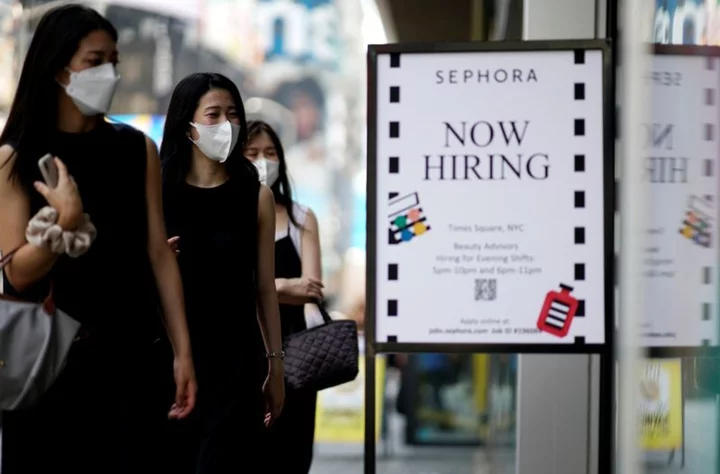By Safiyah Riddle
The number of industries that contributed to U.S. jobs growth last month rebounded to the highest level since January, government payrolls data showed on Friday, bolstering arguments that an uptick in the unemployment rate may not indicate the labor market is weakening.
The Labor Department's hiring diffusion index, which is released with the monthly payrolls data and tracks how many industries are adding jobs, rose to 63.8 in August from 56.8 in July. A reading above 50 indicates that more industries are adding to headcount than are reducing it.
The rebound was particularly pronounced in the rate-sensitive manufacturing sectors, where the index reached the highest level since November, jumping to 55.6 from contraction territory in July at 47.9.
The index is volatile month to month, and the 12-month moving average, at 60.6 in August, shows a steady drop-off from a July 2022 peak when the index for all private industries was 74.1. But August's uptick stalled, at least for now, the year-
long slowdown in the index.
"When I look at a slowdown in the width of hiring, I don’t see that as a contraction, I see it as a return to normalcy," said John Waldmann, CEO of the Human Resources platform Homebase, which tracks hiring across small business sectors.
Most industries have now reached or surpassed employment levels prior to the pandemic, suggesting that the hiring deceleration in some sectors could have been a correction for the flurry of job growth that occurred after lockdowns.
But it is not clear whether August's diffusion index rebound will last.
Federal Reserve Chair Jerome Powell has persistently stated that the labor market, and in particular wage growth, will need to cool in order to bring down inflation to the Fed's 2% target. The Fed has delivered 525 basis points worth of interest rate hikes since March 2022, and Powell has left the door open for further increases, although the overall slowing nature of the August report may counter the need for that.
U.S. nonfarm payrolls increased by 187,000 jobs last month, exceeding forecasts for a 170,000 gain, while the jobless rate rose to 3.8% from 3.5% in July. The report also showed the economy created 110,000 fewer jobs than previously reported in June and July.
"I wouldn't read too much into one month's data, particularly given the revisions in June and July. The diffusion index is trending lower than it was in 2022, which is to be expected with where we are in the current economic cycle," said Gus Faucher, chief economist at PNC.
That said, Faucher sees the latest numbers as still consistent with a healthy labor market.
(Reporting by Safiyah Riddle; Editing by Andrea Ricci)









